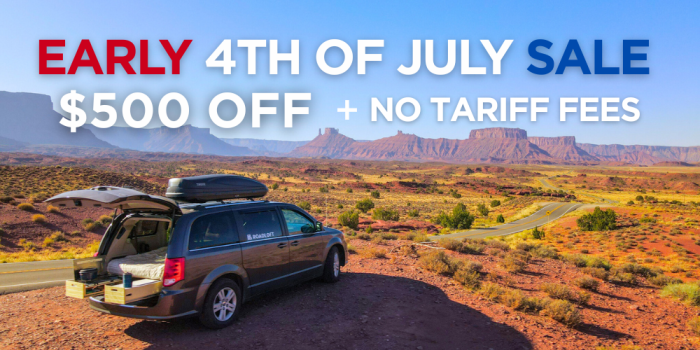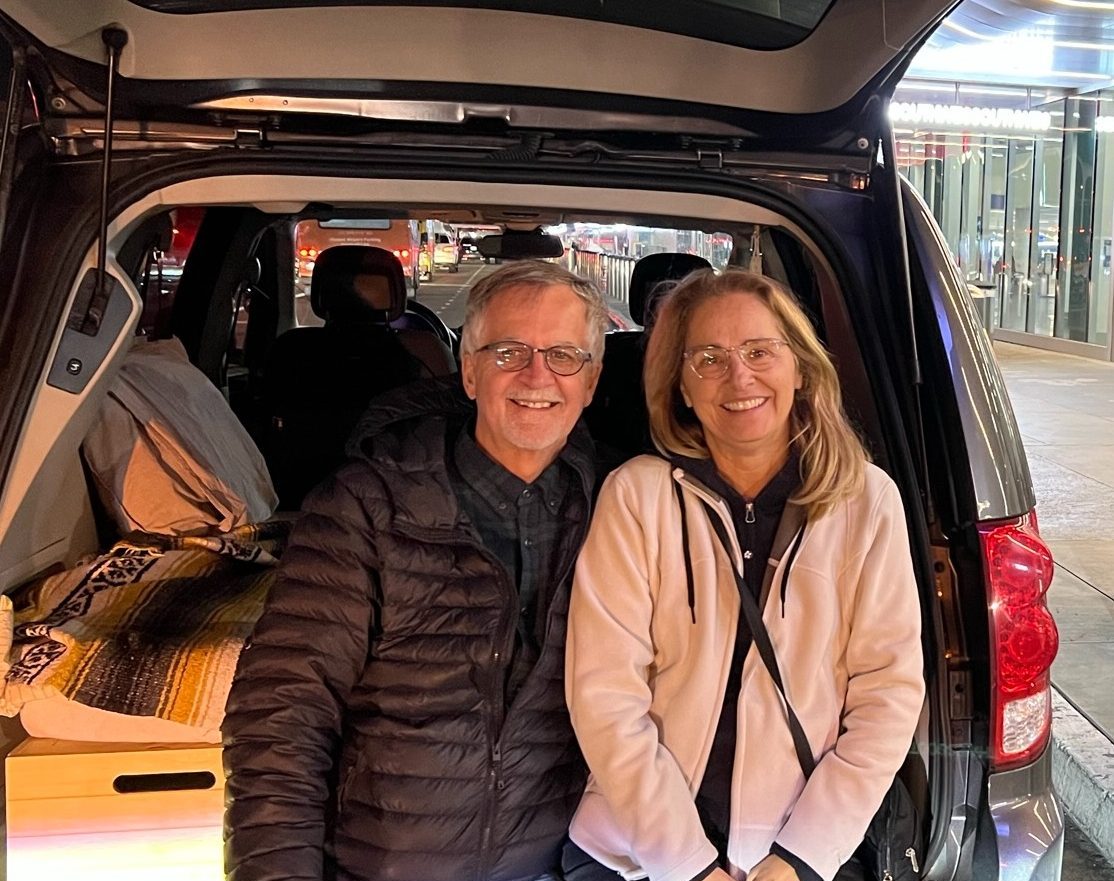
Retirees’ Roadloft Road Trip in California and Arizona
Updated June 20, 2024
In this article, Édith and Denis, young retirees who already own a Class B RV (Roadtrek), share their journey and tips from their trip to California and Arizona. They provide their impressions of the Roadloft setup in a simple minivan equipped with a removable Roadloft camper conversion kit, which they drove from Los Angeles to Quebec in November.
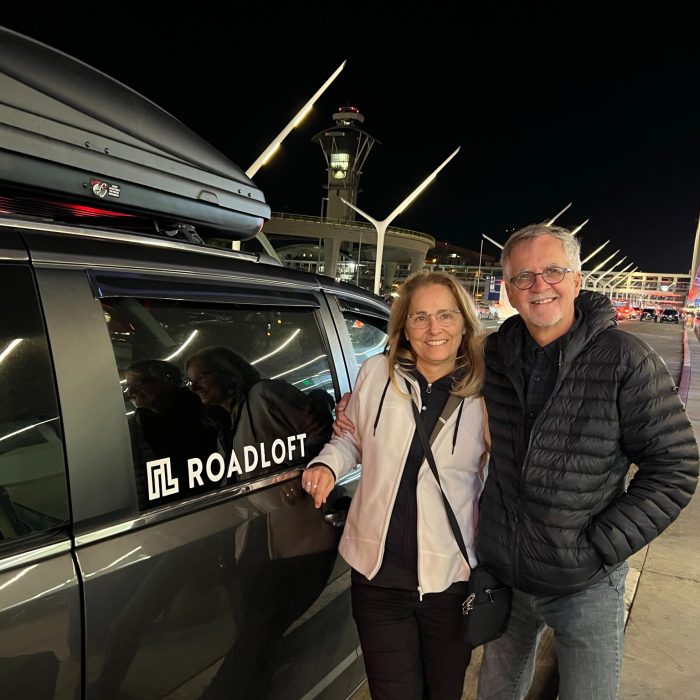
In the fall of 2022, our daughter Laurence, wanting to shorten her trip in California, sought someone available to drive her minivan equipped with the Roadloft camper conversion kit from Los Angeles to Quebec.
LIKE WITH OUR WESTFALIA, 35 YEARS LATER
Owners of a Westfalia in the 80s and a Class B RV for a few years, my spouse and I quickly decided to combine business with pleasure and volunteered. We were eager to embark on this simplified Roadloft Vanlife journey. Traveling in California and Arizona from mid-November to early December would certainly be brighter than the dreary weather in Quebec during this time of year.
IN MODERN MECHANICS
For us, the formula is almost identical in every respect to our Westfalia of the time, but 35 years later. The equipment list is similar, but in a modern powertrain, without the long manual transmission arm protruding from the floor of the old Volkswagen…. And with roadholding that allows us to happily extend the list of kilometers on each of our days. Excited to get going, we’re curious to see how we’ll enjoy the experience. Will we be comfortable and at ease in the minivan’s smaller space compared to our B-Class?
ITINERARY AND PLANNING
Once we’ve decided to leave, we start planning our trip – a fascinating activity in itself, since it’s the beginning of our discoveries. In our case, we’ve developed a taste for sticking to high-level itinerary planning.
THE WATCHWORD: SPONTANEITY AND ROOM FOR IMPROVISATION
Why high-level planning? Because for this type of Road Trip in the West, we’re looking for spontaneity and to avoid the rigidity of overly established plans that force us to stick to a quasi-military schedule and thus inevitably deprive us of opportunities that arise along the way.
Experience has taught us that any destination, no matter how eagerly awaited, can become less attractive for whatever reason (e.g. weather). In such cases, we like to shorten our stay. Or, conversely, to extend it, as in the case of Laguna Beach (you’ll soon see).
FIRST STEP: PLANNING
Experience has shown us that a few simple steps will help us leave and travel in peace.
TWO SIMPLE AND EFFECTIVE GOOGLE TOOLS: SHEETS AND MY MAPS
These two free Google services are our main tools for recording all our research and planning the trip. With Google Sheet and Google My Maps, we concentrate all our simplified planning info, which is recorded as we plan, and becomes available in real time at any time during the trip. Even in areas without Internet access.
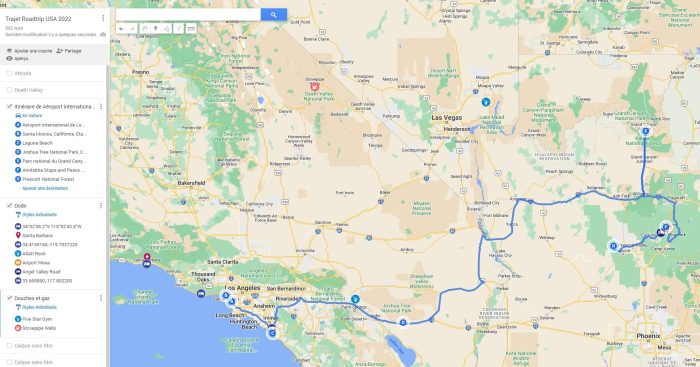
IDENTIFY ATTRACTIONS, DISTANCES AND WEATHER VARIATIONS
Since we’re leaving late in the autumn (mid-November), we’re planning our itinerary for about 3 weeks, so we’ll be back in early December. It’ll be easy and at our own pace, as we’ll only be making the return trip (from California to Quebec).
We identify the must-see attractions, the destinations that interest us, enter them in MyMaps and in a Google Sheets spreadsheet in order of travel, adding between the sites three further columns: the distance to the previous location and then the average maximum and minimum temperatures at this time of year. Even though we’re in the southern United States, at this time of year in mountain or desert regions, the day/night temperature differences are worth identifying beforehand. In doing so, we quickly realize that exceptional destinations such as Bryce, Zion, Arches and even Monument Valley are not recommended at this time of year, due to the risk of snow. We’ll save them for another trip.
ATTRACTIONS, SLEEPING, WASHING AND SHOWERING
Once we’ve identified the attractions on MyMaps, we locate official and informal camping sites in the heart of the parks or on the outskirts, as in the BLMs. We add Boondocking sites where you can sleep in transit, easily found with apps like Ioverlander, and places to take a shower (facilities easily found in the U.S… think of the Love Truck Showers chain that criss-crosses the highways with its very clean and safe facilities).
FIRST PLEASANT SURPRISE
In fact, we’ll be taking the plane for the outward journey, and notice the low price of Quebec-Los Angeles tickets: $270.
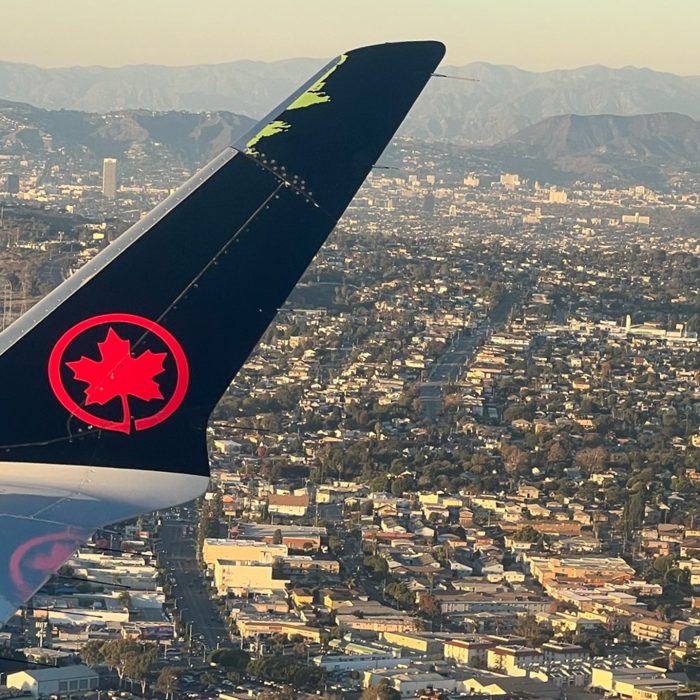
Tickets purchased, planning simplified and accessible on our Iphone and Ipad, online and offline….
But first, a few photos of our arrival in Los Angeles, where Laurence and Samuel join us. After a few minutes aboard their Dodge Grand Caravan, we take a stroll around Santa Monica and enjoy a bite to eat. The next day, we leave them at the airport to transfer luggage and passengers. From there, we hit the road, heading for Laguna Beach, just 90 minutes away.

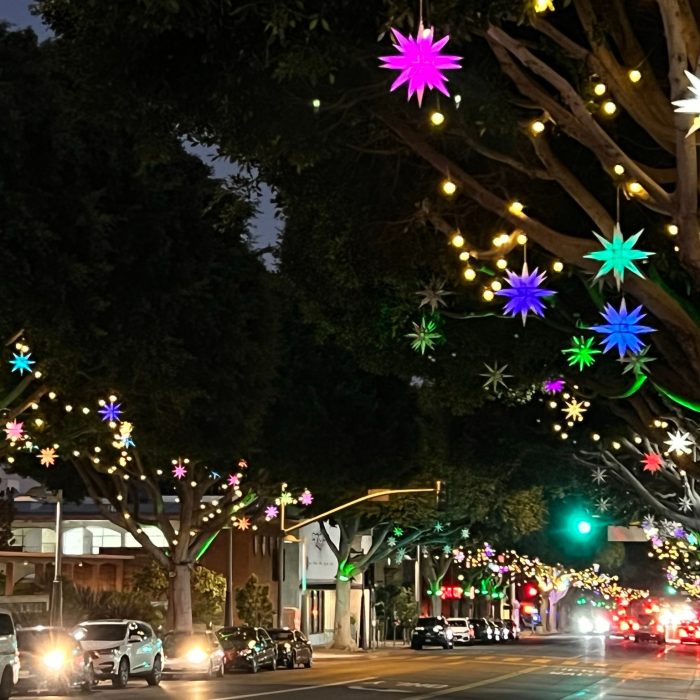
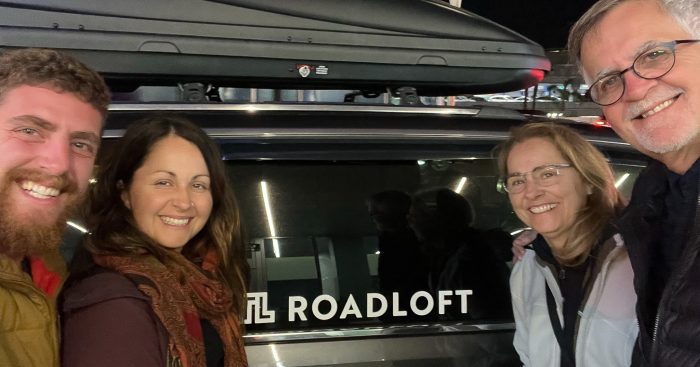
BEACH AND RELAXATION AT LAGUNA BEACH, CALIFORNIA
Before heading for the high altitude parks with their colder nights, we get off to a gentle start, driving just 90 minutes due south to Laguna Beach, a beautiful little town on the Pacific coast, where we’ll spend three beautiful days (2 days more than planned) soaking up the sun.
Here, incidentally, is a fine example of the freedom that high-level planning allows, without camping or hotel reservations, and thus leaving room for the spontaneity that should govern most of our Road Trips. As we mentioned above.
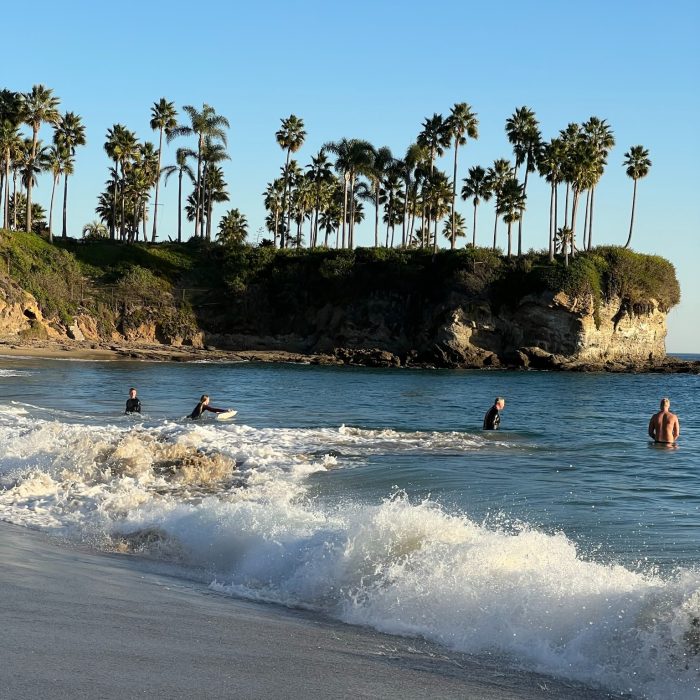
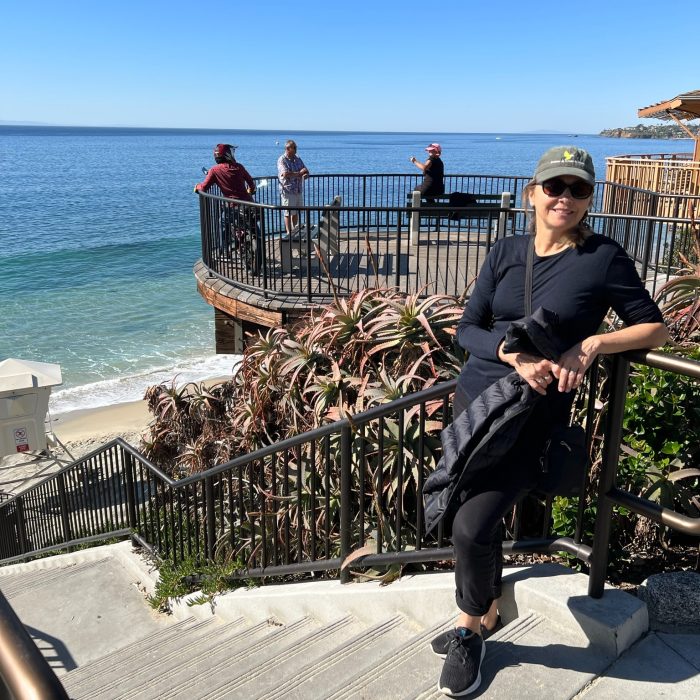
5-STAR BOONDOCKING
In the evening, we take refuge in the mountains (suburbs about 20 minutes away) in a private neighborhood open to the public, where we have 24-hour access to the parking and toilets of deserted team sports fields. As an added bonus, the site is adjacent to mountain trails with panoramic views. 5-star boondocking!
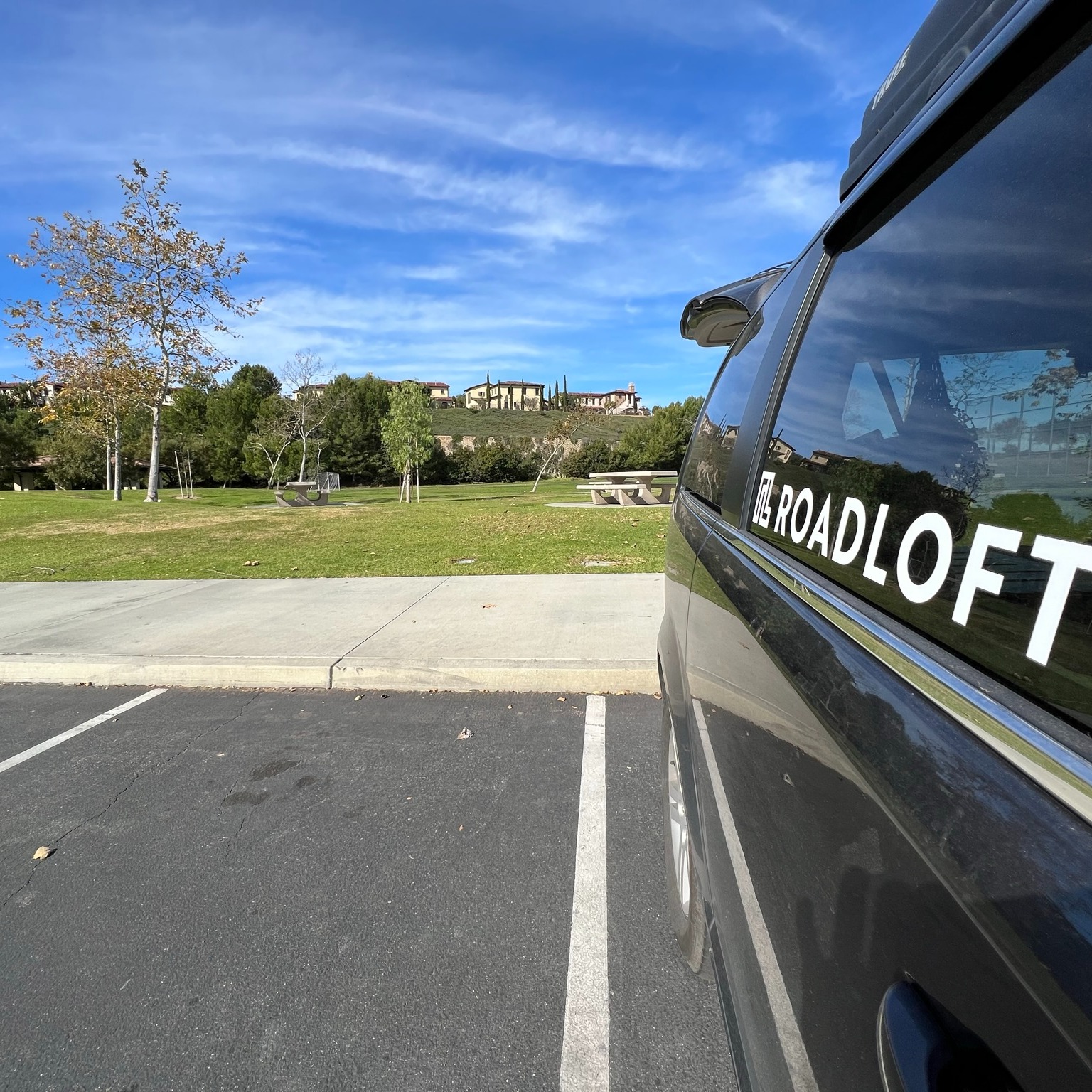
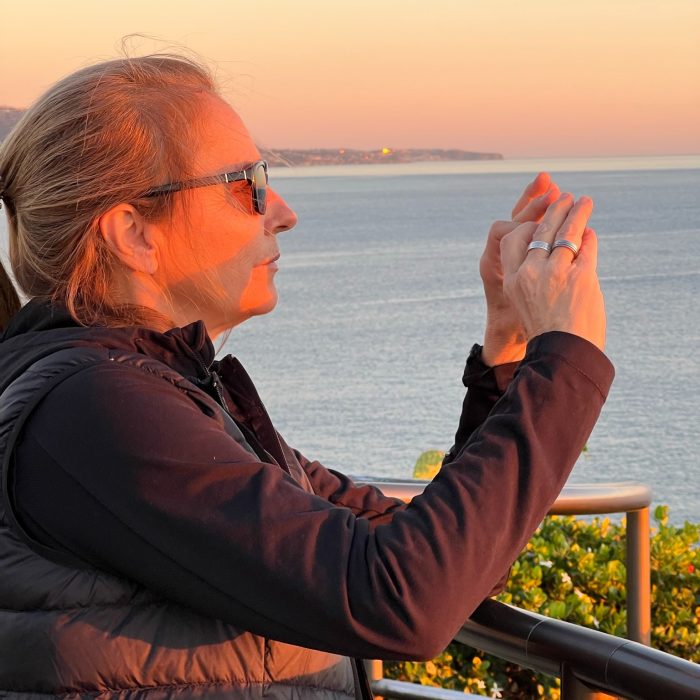
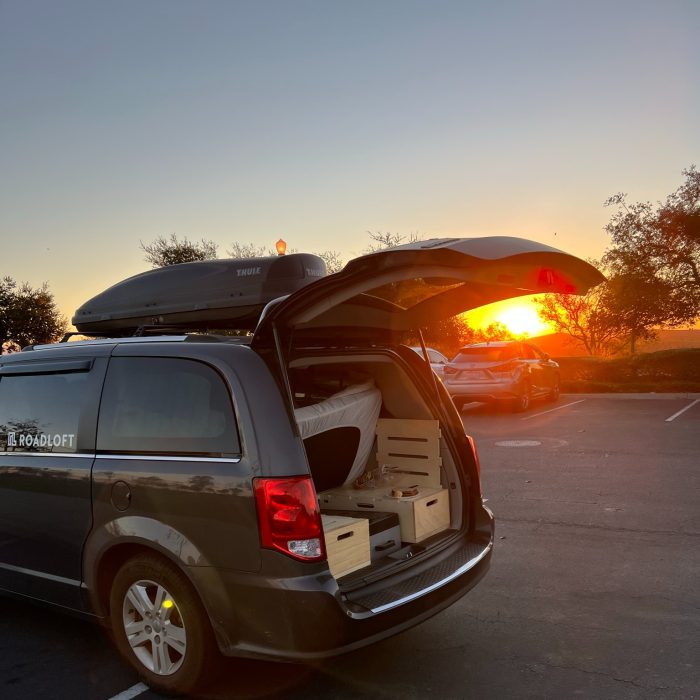
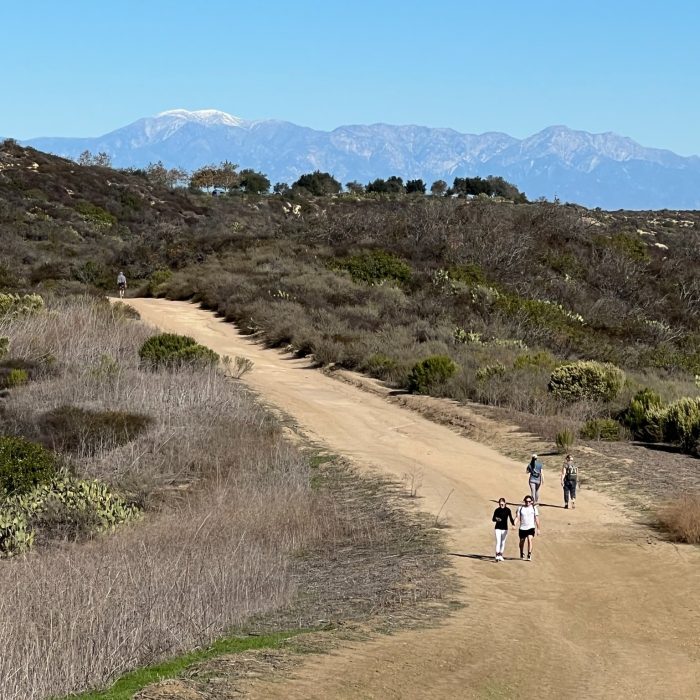
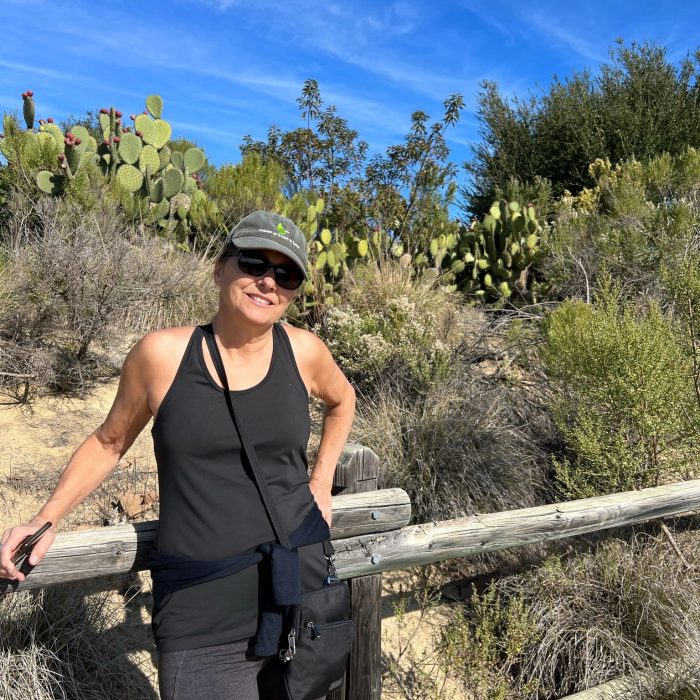
After breakfast, we set off for a walk along these scenic paths before hitting the road for a few minutes before our second coffee at Laguna Beach. The weather is so mild that we’re very comfortable on the beach. California is serving up a sweet November. So much so, in fact, that we find it hard to leave, even a few days later than originally planned.
We leave the Pacific at the end of this first coastal segment of the trip. A few short hours of beautiful climbing roads separate us from our next destination at the edge of the desert. The thermal spring baths of Palm Spring await us! But first, a few initial observations on the minivan and its conversion kit.
MANOEUVRABILITY, MINIVAN HANDLING, DISCRETION
In Los Angeles traffic, the minivan’s handling, roadholding and acceleration amaze us. We’d never have imagined this of a minivan. Let alone a Dodge Grand Caravan…
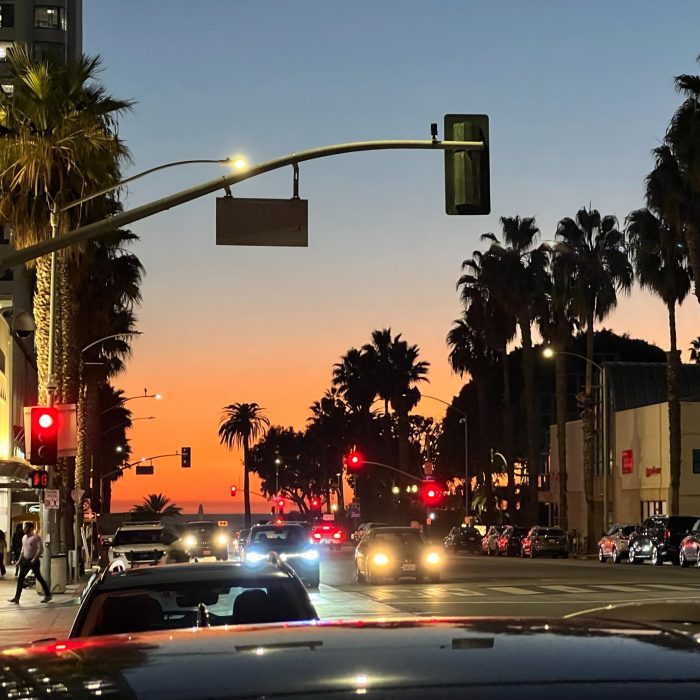
On the little streets of Santa Monica or Laguna Beach, we turn on a dime, park easily and, above all, incognito. A small detail that would easily allow us to sleep in a safe and quiet place in a posh place like Santa Monica, where even remote campsites are priced at Hollywood levels. Instead, we’ll use the money to pay the bill for a nice dinner at a trendy pub.
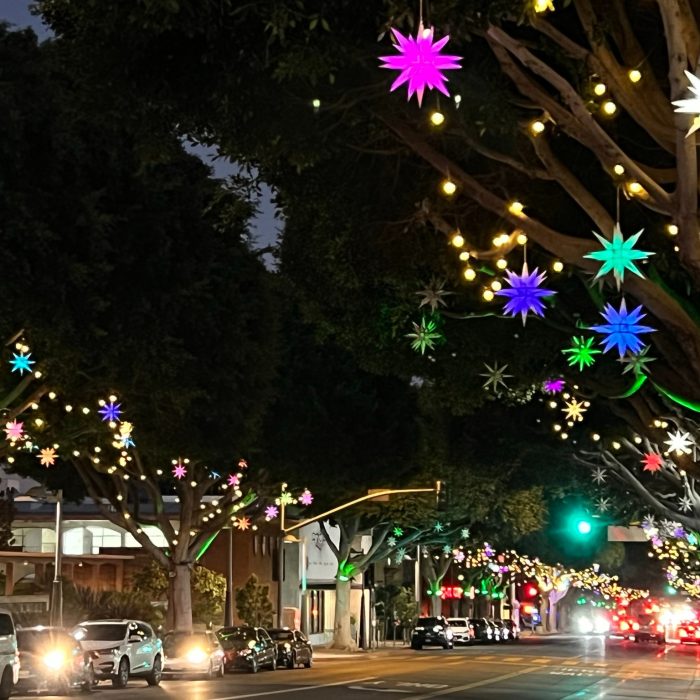
KITCHEN ERGONOMICS, BED COMFORT
Although we enjoy discovering many small restaurants and bistros, we sometimes prepare our breakfasts and lunches in the minivan. Its minimalist kitchen is practical, and we particularly appreciate its real refrigerator (with compressor) powered by a rechargeable lithium station and solar panel.
But the first star goes unquestionably to the comfort of the bed. We’d heard great things about the new Roadloft 3.5” double foam mattress (high density and memory foam). But fickle as we are about bed quality, we had our doubts about how our lumbar vertebrae would respond. We slept more than comfortably. In first-class comfort, even without the help of California’s finest Pinots gris!
THE MYSTICAL JOSHUA TREE PARK
As a music lover, this mythical place has long brought me back to the U2 album named after the famous American National Park. An album produced by Quebec-born Daniel Lanois, who is also enjoying a dazzling career as a composer, and whom I greatly appreciate.
Joshua Tree National Park takes its name from the region’s iconic trees, giant yuccas. Mormon pioneers in the 19th century dubbed them “Joshua Tree” because of their appearance, which for them evoked the arms of the biblical prophet Joshua reaching for the sky.
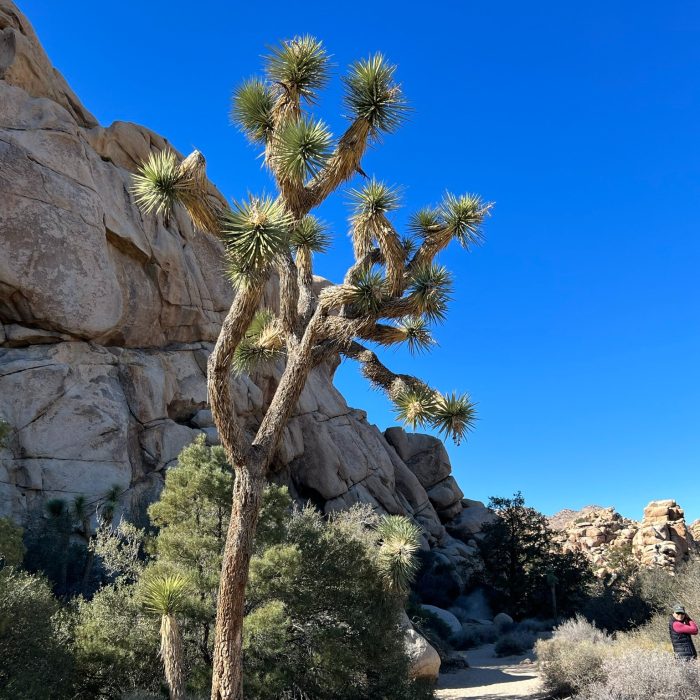
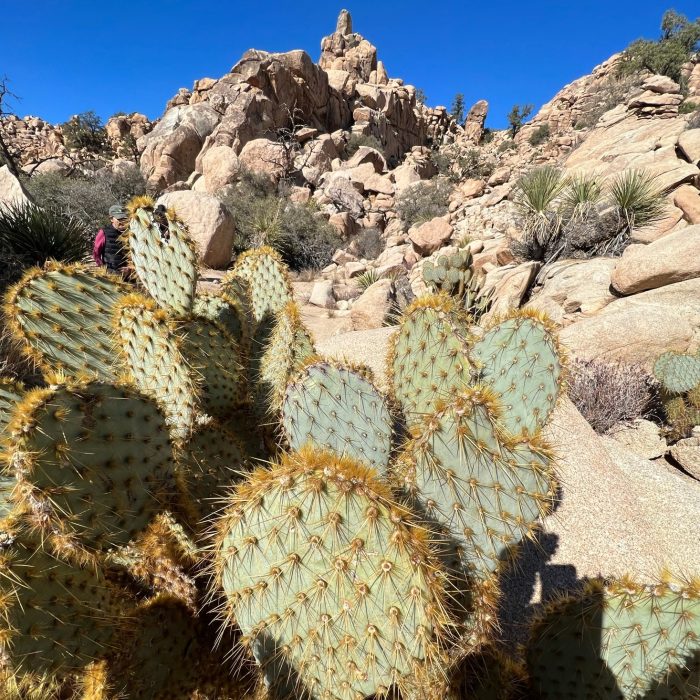
The park is famous for its unique desert landscapes, rock formations as stunning as they are spectacular, and of course, all those Joshua Trees that punctuate its arid landscape.
Our exploration of the park took place over two days in “slowmo” mode, in tune with these meditative places. We slept one night in a campsite in the heart of the Park, and the other night just outside the Park in a BLM Dispersed Campground, public land, free camping managed by the State of California.
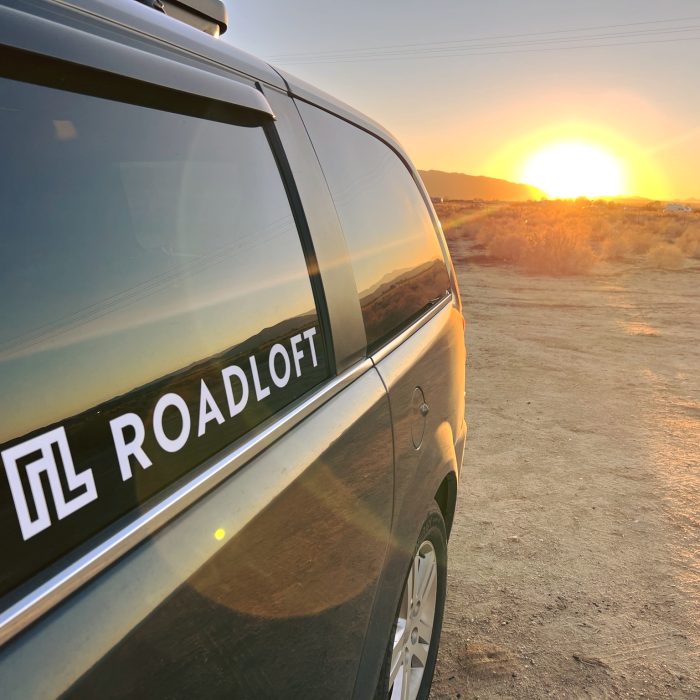
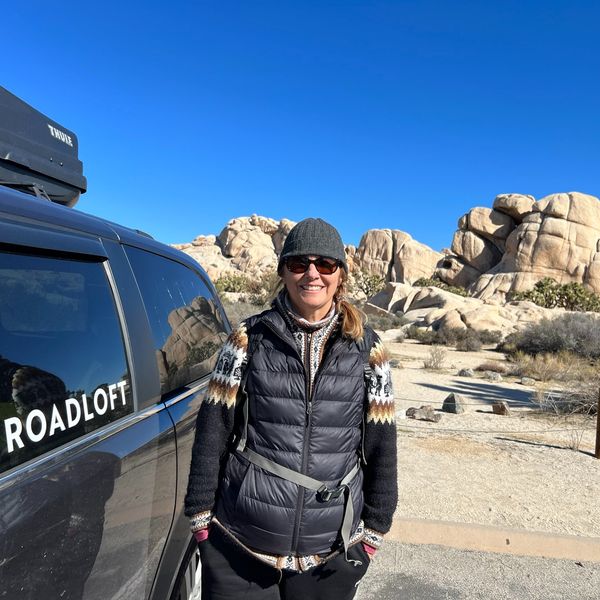
FLEXIBILITY AND FRUGALITY OF THE MINIVAN
From Joshua Tree, we drive a day of highway through scenic desert landscapes to the incredible Grand Canyon. Every day we taste the flexibility of the minivan.
We return to each destination much more quickly than we would with our Roadtrek B-Class. There’s no slowing down on long climbs, and we feel in total control of the vehicle. Stops at the pump are much less frequent than with our heavy V8 Roadtrek. And what can we say about filling up with gas, which is twice as quick to do… and light to bear!
DINNER SPONSORED BY FUEL ECONOMY
On long-haul days, fuel economy allows us to visit the best restaurants in the evenings, where we like to relax. Because cooking outdoors in late November, even in California, would mean doing it before 5 p.m. or under the lamp. The sun, though much more generous than at home, doesn’t extend later in the evening.
Arriving at the Grand Canyon, we settled into a comfortable hotel for 2 nights, as we were at altitude and the nights dipped quite far below zero. We’ll be touring the park for 3 days.
GRAND CANYON, A GRANDIOSE NATURAL SPECTACLE
Despite having seen a panoramic multi-image show (hello DL!) on the site 40 years ago, and despite everything we were told about it, it was a shock! We were blown away by the immensity of the horizon. Small and large screens are not enough to reveal the scale of the Grand Canyon. You have to see it for real!
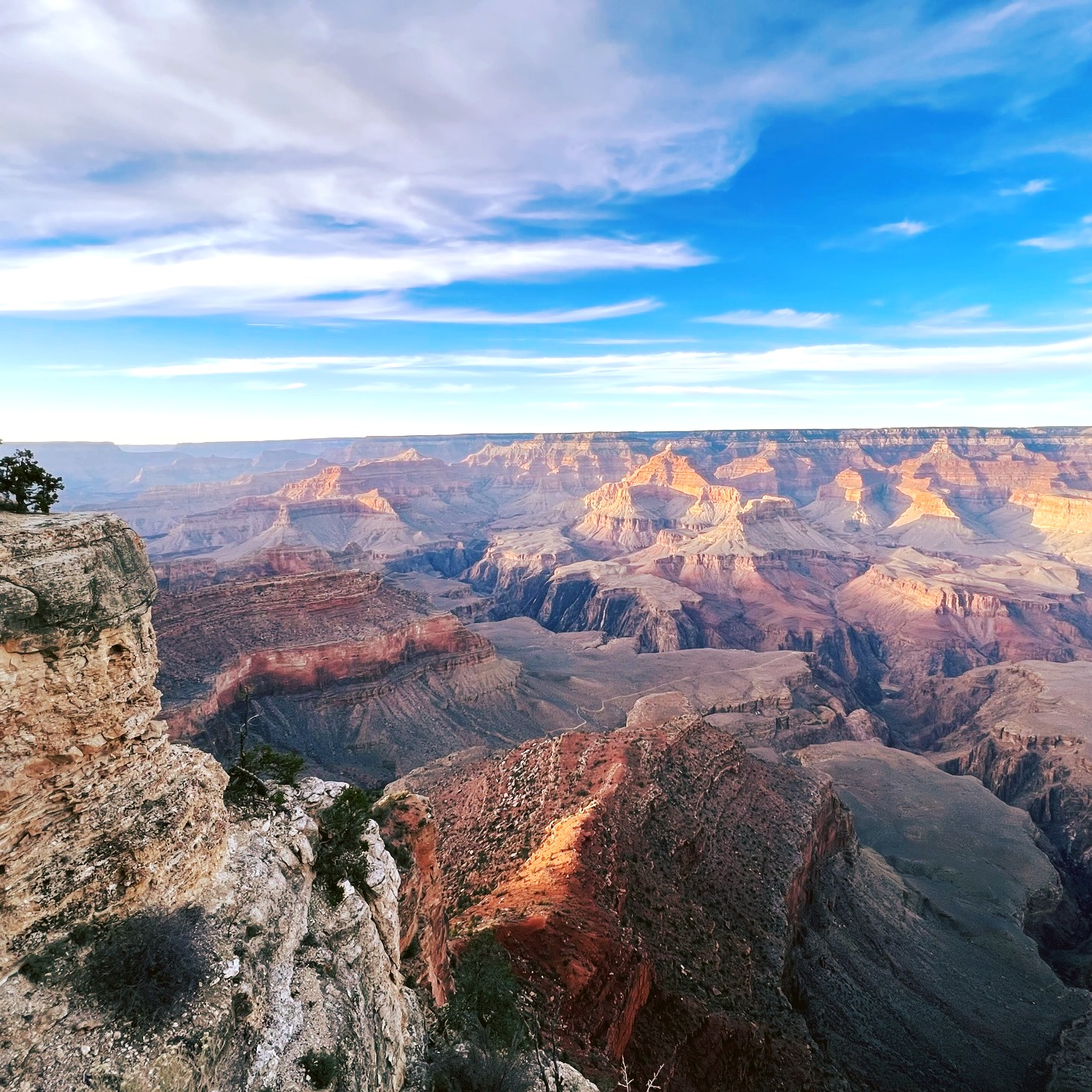
Time stands still. A place of contemplation if ever there was one, where the horizon never ceases to challenge the beholder. Where descending into the bowels of the valley makes the heart beat to the rhythm of the giant canyon. A place where Mother Nature has decided to draw surprises on grandiloquence!
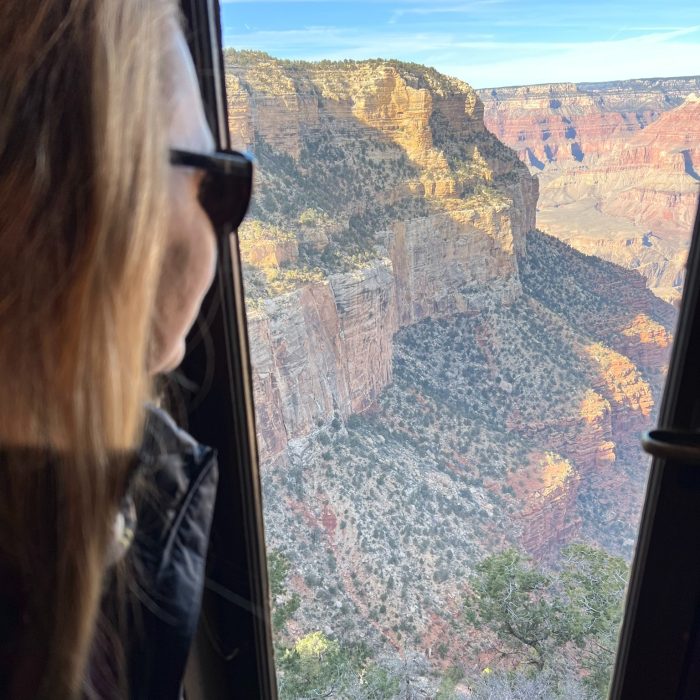
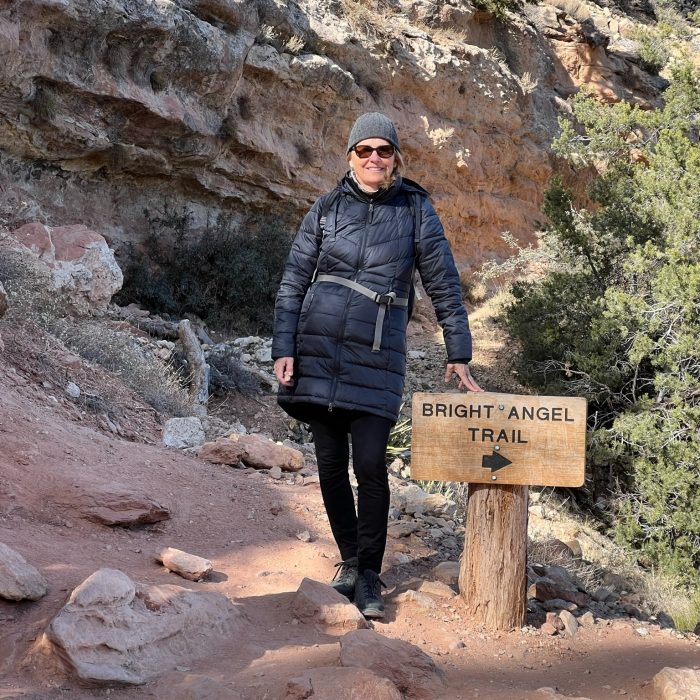
Three days surveying the area won’t be enough, so we’ll be back one day to immerse ourselves further…

SEDONA’S STONE MONUMENTS
After managing – with difficulty – to avert our gaze from the Grand Canyon, we hit the road for a few hours of high altitude descent – heading due south – to reach Sedona.
CLIMBING AND DESCENDING AS IF ITS NOTHING
From the Grand Canyon to Sedona, as if nothing had happened, we literally descend for 3 hours. The minivan attacks each descent as if taunting the motorists, who often struggle to keep their brakes from heating up. The minivan doesn’t mind going downhill as much as it does the long climbs, which it climbs at breakneck speed.
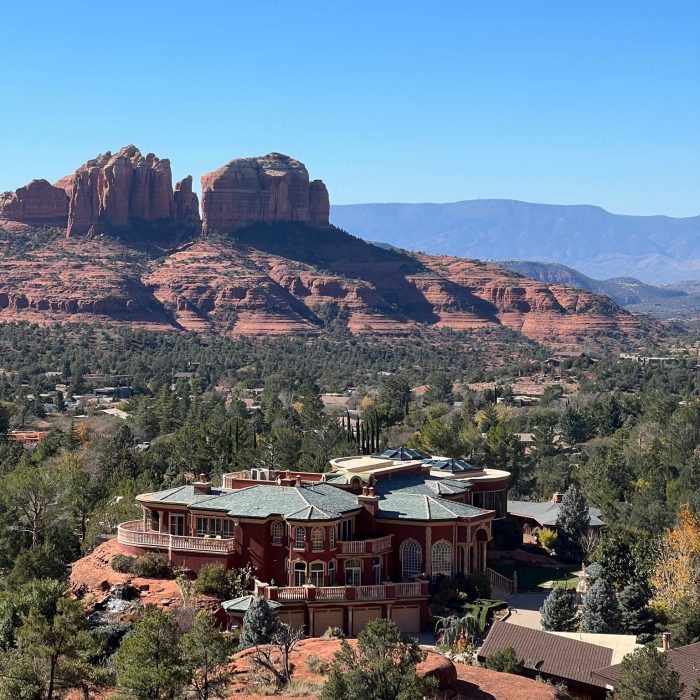

A detail for anyone who’s never experienced driving a big RV, which struggles to climb long climbs and quench its thirst 😉 And slowing down on long downhills. Believe me, we’re glad we’re not in this movie.
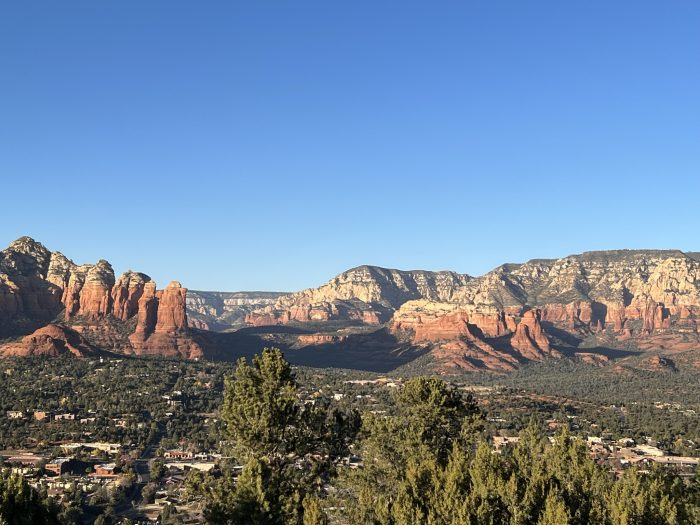
BACK TO FREE CAMPING IN SEDONA
Sedona is a peaceful, beautiful village surrounded by ridges and stone mountains criss-crossed by panoramic trails. The region is magical, and Sedona has all the potential to seduce us, but for one small detail.
Timing is every thing. Thanksgiving is here. And as the nice lady at the tourist information office tells us, when asked which trail to choose, “once a year, Thanksgiving transforms our peaceful village into a tsunami of tourists”.
So we’ll be staying on the outskirts of Sedona, 10 minutes away, in a nice little boondocking spot where we’ll spend two nights sleeping like babies before heading off for breakfast in a charming little family-run restaurant run by Mexicans to enjoy abundant breakfasts before hitting the trails and taking in panoramas we’ll definitely be returning to see another year, off Thanskgiving, please…
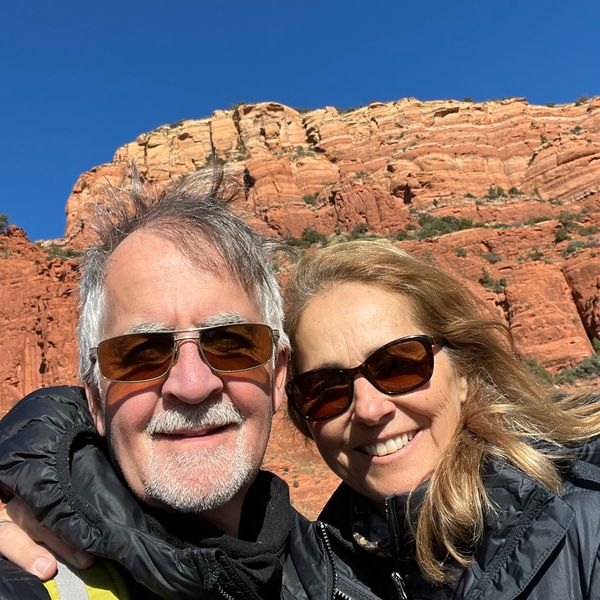
ALREADY RETURNING
Tomorrow we’ll be heading home. We had planned to visit southern Arizona, then head to New Orleans and enjoy the beaches of northern Florida before returning home, but the long drive across Texas and our activities in Quebec City have prompted us to come back. We’ll be leaving Sedona with a heavy heart, bound for Quebec City, a journey of 4,750 km. This distance, to the nearest 200 km, represents the Quebec City-Florida round trip! We often forget just how far we are from the US West, though. And with good reason, as nature abounds with exceptional scenery.
DETERMINING A LESS RISKY ROUTE IN TERMS OF WEATHER
Late November and early December are Mother Nature’s favorite times to lay down her long coat of snow, and not just in North America. At altitude, even far south in the boreal forest, the mercury sinks low.
MAKE YOUR OWN PATH
So we won’t be listening to Google Map, which suggests a straight line via St-Louis Missouri, then the Great Lakes to the north. We’ll avoid these areas, which are more prone to snow and storms. By deviating just a little to the south, we’ll reach Virginia, where the Atlantic moderates the onset of winter. We’ll gain in confidence and quiet stability.
I quickly map out potential stops for days of up to 1000 km. Amarillo (Texas), Memphis and Nashville (Tennesse), Christianburg (Virginia), Albany (New York) come to mind. From this list, two names catch my eye, where I’d love to settle down and visit – guess which? The mecca of rock’s roots, the birthplace of Elvis, Memphis of course, but also Nashville, where so many musicians have recorded their albums, including the likeable Jim Corcoran, an English-speaking Québécois turned Francophile.
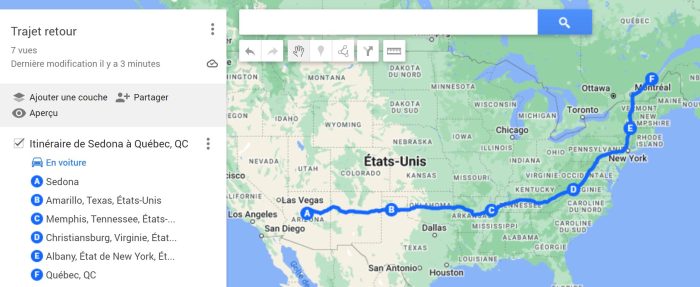
ONE DAY AT A TIME
With the route mapped out, we set off with no other plan than to book a room in Amarillo. After a few days camping in Sedona and tomorrow’s long first day on the road, settling into a hotel will be comforting. At breakfast in Sedona, we easily book a room for tonight in Amarillo. Welcome, low season!
DRIVING AT NIGHT?
It’s late November and the days are short. We don’t feel like riding at night this time. And yet we sometimes even prefer it. Because driving at night also has its advantages on long journeys. Less traffic and the impression of a different clientele, with a more “professional”, smoother ride.
WE OPT FOR THE DAY
When you can alternate between two drivers every 2 or 3 hours, with good music, you’ll discover wings to the minivan! The days are short: we hit the road at 7 a.m. and stop an hour after sunset, i.e. around 6 p.m. Counting supply stops and lunchtime, we manage to do days of up to 1000 km, and no more. Our routine lasts 5 days. Reservation of the hotel for the evening at lunchtime, before putting on the km where we’ll be dropping off after a day on the road. Hot shower and dinner in a local pub. Can you think of a worse routine?
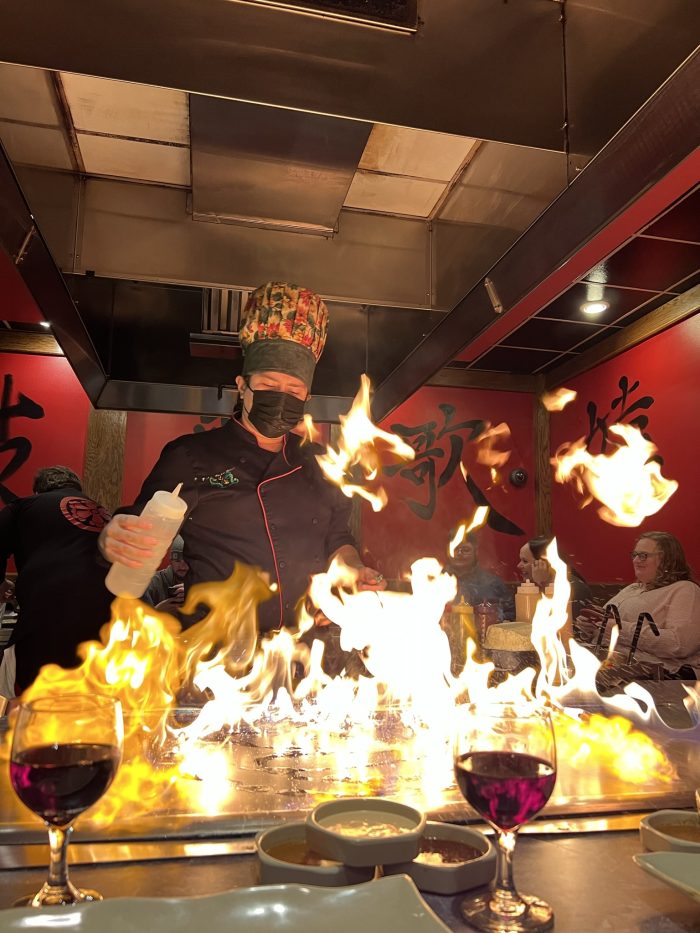
SKY, CLOUDS
At this rate, we realize as we pass through customs that the sun has just left us for the first time since November 14, the day we left! It’s a caricature of how early we crossed the border at St-Bernard de Lacolle, when an ox-gutting wind and rain made up a welcome committee we’d forgotten about. Still, better than a snowstorm… 😉
OUR CONCLUSIONS
PLAN WELL, BUT NOT TOO MUCH
This is the key to a successful Road Trip. Always have the information available so you can feel at ease and improvise without stress. We do this kind of trip to marvel and discover, not to get lost or run out of steam. I’ve seen too many travelers struggle to keep to a pre-set schedule. Not for us. As mentioned earlier, use Google Sheets and MyMaps for your planning. It’ll make your life easier. Be vigilant in interpreting suggested routes. Evaluate your options.
BRING THE ESSENTIALS
Don’t bring your whole wardrobe. It will only complicate your daily routine. On the other hand, take note of the weather stats (min and max) for the different locations at the planned times to make sure you always have comfortable solutions. If you have to cope with wide variations, opt for the malleability of multi-layers. Similarly, you may not be reading a novel every 3 days. If that’s the case, concentrate everything in your e-reader.
ROAD AND MUSIC, A HARMONIOUS MARRIAGE
Roads and music are made to roll in harmony. At times, the music will carry you away. Make sure you have your classics at the ready, and take advantage of the journey to make new musical discoveries. Occasionally you’ll get the suspicious feeling that a particular piece has been tailor-made for the landscape unfolding before your eyes. It happened to us a few times on the way to Joshua Tree. No, it wasn’t Pink Floyd or U2 or Lanois, but the Québécois Valence that Laurence loves as much as we do, seriously 😉
CONFUSED APPREHENSIONS
The Roadloft formula has been a source of pleasant surprises for us. And we didn’t find any notable disadvantages in this alternative to the RV. For example, we were apprehensive about not having a built-in toilet like in our RV. So we brought along a portable toilet that we never actually used.
THE ADVANTAGE OF OFF-SEASON TRAVEL
Our trip was relatively short, given the context and the dates involved. On the other hand, we loved traveling out of season. This trip made us want to do much longer road trips in the US West. Add Colorado, Utah, Texas, Louisiana, return to California and Arizona… I can just imagine us there from March to June and from mid-September to mid-November. And try out Florida or Mexico in winter.
FREEDOM, DRIVING FLEXIBILITY AND BUDGET MARGINS FOR “LIVING MORE”
Fuel
While leaving a carbon footprint 2 to 5 times smaller, just in terms of fuel, such a trip in a minivan rather than an RV will leave somewhere between $2,000 and $4,000 in your pocket. A Toyota hybrid minivan will consume 6 litres/100 km, the Pacifica, Grand Caravan, Honda Odyssey, Kia Carnival or Sedona around 8-9 litres/100km vs 17 litres/100 km for my Roadtrek and up to over 30 litres/100 km for the big A or C Class.
Free or paid camping
Prefer beautiful official campsites to boondocking? All tent pitches (shady, more intimate and, what’s more, much more economical) are available to you. Prefer to sleep in? The West is full of easy-to-spot boondocking sites. Prefer to improvise? Your ordinary-looking minivan can easily be parked incognito for the night.
Showers for travelers
Showers in sports centers and travel resorts will never cost more than a few dollars.
Get a taste of local life
Unlike the big RV connected to campground services, your self-contained minivan is always ready to go… at two minutes’ notice! With the savings inherent in traveling with your everyday vehicle, rather than an additional vehicle dedicated to the trip (expensive RV and all the associated costs), you’ll be able to sample more of the local culture. You’ll be able to visit museums, shows, pubs, restaurants and sometimes, as we did at the Grand Canyon and on the way back, hotel accommodations.
For our part, it’s these budgetary margins freed up by the formula’s savings, coupled with the flexibility of driving (the absence of any worries in this regard, no matter how long the climbs or endless the descents) that stand out from the pack of advantages of the Roadloft formula. Not to mention all the unavoidable hassles for RV owners (storage, maintenance). Just washing it takes half a day!
These are major points, and they also need to be combined with the cost of acquiring an RV dedicated to travel. All the money tied up for so few days out per year makes you wonder. Two interesting articles from the Vanlife blog on the Roadloft website cover both points very well (1. Vanlife at 1 or 2% of the cost – Roadloft vs RV and 2. Roadloft Road Trips at $20 per day).
My co-pilot and I loved the formula and we’re thinking of what to do next.
A FINAL THOUGHT: THE 90-MINUTE RULE
Such a Road Trip is not always feasible for all sorts of reasons, whether related to availability or budget. For our part, while we’re thinking about our next long-distance road trip, we can’t wait to leave in a few weeks’ time for our nearby escapades. We always manage to find places to explore and friends to meet within 90 minutes of home. For us, this is the essence of Vanlife, of camping. Close, regular contact with nature, exchanges with friends and family. In nature, but also in the city, during popular festivals for example. Escape close to home is accessible, easy and rejuvenating. And it creates lasting memories, just as much as a long Road Trip 🙂
We wish you a pleasant journey!
Édith and Denis

